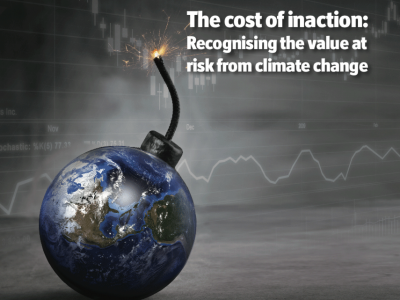THE COST OF INACTION: RECOGNISING THE VALUE AT RISK FROM CLIMATE CHANGE

The asset management industry—and thus the wider community of investors of all sizes— is facing the prospect of significant losses from the effects of climate change. Assets can be directly damaged by floods, droughts and severe storms, but portfolios can also be harmed indirectly, through weaker growth and lower asset returns. Climate change is a long-term, probably irreversible problem beset by substantial uncertainty. Crucially, however, climate change is a problem of extreme risk: this means that the average losses to be expected are not the only source of concern; on the contrary, the outliers, the particularly extreme scenarios, may matter most of all. To highlight the relevance of climate change to the asset management industry and beyond, this research estimates the value at risk (VaR)1 to 2100 as a result of climate change to the total global stock of manageable assets (the climate VaR). The world’s current stock of manageable assets is estimated to be US$143trn.2 The resulting expected losses to these assets identified in our findings, in discounted, present value terms,3 are valued at US$4.2trn—roughly on a par with the total value of all the world’s listed oil and gas companies or Japan’s entire GDP. This is the average (mean) expected loss, but the value-at-risk calculation includes a wide range of probabilities, and the tail risks are far more serious. Warming of 5°C could result in US$7trn in losses – more than the total market capitalisation of the London Stock Exchange - while 6°C of warming could lead to a present value loss of US$13.8trn of manageable financial assets, roughly 10% of the global total.
Relevance
An assessment of the cost of climate change from the Economist Intelligence Unit 2015.
